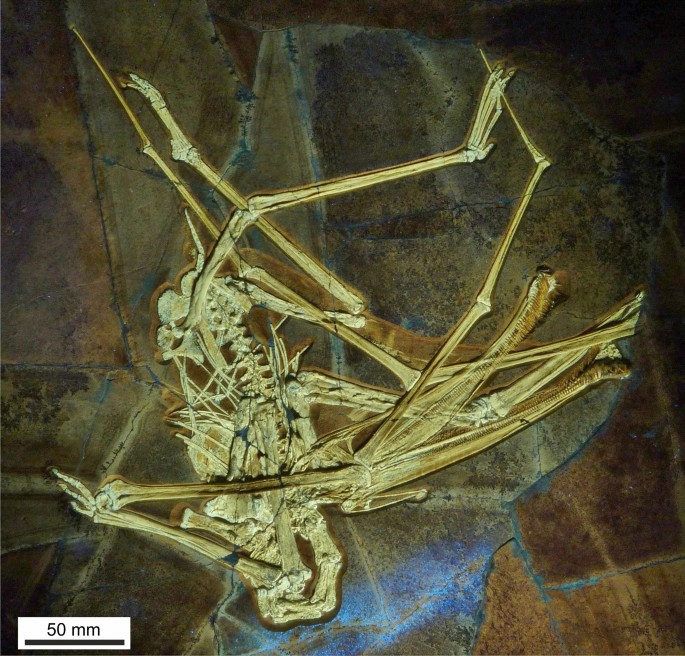Paleontologists have identified a new species of long-legged, filter-feeding pterodactyloid pterosaur from the well-preserved specimen found in a quarry in Germany.

An artist’s impression of Balaenognathus maeuseri. Image credit: Megan Jacobs.
Balaenognathus maeuseri lived in what is now Europe during the Upper Jurassic epoch, between 157 and 145 million years ago.
The flying reptile belongs to Ctenochasmatidae, a family of pterosaurs known from the limestone in Bavaria, Germany.
“This pterosaur had teeth in the upper and lower jaw, which are a mirror image of each other. There are at least 480 teeth in total,” said University of Portsmouth’s Professor David Martill.
“There is one other pterosaur with more teeth — Pterodaustro from Argentina — but it has stubby teeth in its upper jaw and even longer teeth in its lower jaw, so this new specimen is very different from other ctenochasmatids.”

Holotype of Balaenognathus maeuseri. Image credit: Martill et al., doi: 10.1007/s12542-022-00644-4.
“The teeth of the new pterosaur suggest an extraordinary feeding mechanism while it waded through water,” he added.
“It would use its spoon-shaped beak to funnel the water and then its teeth to squeeze out excess liquid, leaving prey trapped in its mouth.”
“The animal likely dabbled as it waded through shallow lagoons, sucking in tiny water shrimps and copepods and then filtering them out through its teeth just like ducks and flamingos.”

Skull of Balaenognathus maeuseri. Image credit: Martill et al., doi: 10.1007/s12542-022-00644-4.
The well-preserved skeleton of Balaenognathus maeuseri was recovered from the Upper Jurassic plattenkalk limestones of the Torleite Formation at Wattendorf, Bavaria, southern Germany.
“The nearly complete skeleton was found in a very finely layered limestone that preserves fossils beautifully,” Professor Martill said.
“The jaws of this pterosaur are really long and lined with small fine, hooked teeth, with tiny spaces between them like a nit comb.”

“The long jaw is curved upwards like an avocet and at the end it flares out like a spoonbill.”
“There are no teeth at the end of its mouth, but there are teeth all the way along both jaws right to the back of its smile.”
“And what’s even more remarkable is some of the teeth have a hook on the end, which we’ve never seen before in a pterosaur ever.”

“These small hooks would have been used to catch the tiny shrimp the pterosaur likely fed on — making sure they went down its throat and weren’t squeezed between the teeth.”
Source: sci.news








